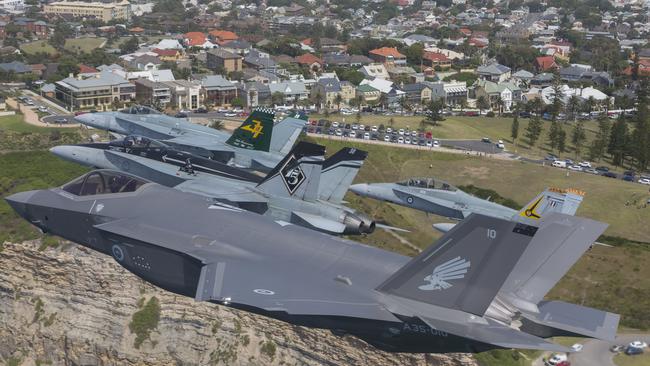
Moreover, the new chief executive of submarine developer Naval Group, Pierre Eric Pommellet, is in the mould of former Naval Group deputy CEO Marie Pierre de Bailliencourt, who sold the Australian government the project. Once she had won the contract she was abruptly removed from office by the CEO at the time, Herve Guillou, who wanted as much of the project as possible undertaken in France. Pommellet changed the Guillou policy and saved the contract — at least until after the election.
Australia can only hope that the latest sales pitch by the French is factual, but it sounded eerily like the past sales pitches of Lockheed Martin advocating continuation of the Joint Strike Fighter. Australia now has $300bn at stake in three highly speculative defence equipment design projects — the JSF, the submarine and the frigates. The JSF is not suitable for its original purpose and most of the submarines and frigates will not be available for 20 years. We are likely to have serious defence issues well before then.
The Australian defence equipment crisis starts with the JSF/F-35.
Much of the truth now coming out of the US about the JSF was disclosed to Australia many years ago by me, working with Air Power Australia. It was naturally denied by Australian defence chiefs and developer Lockheed Martin. But six months ago Charles Quinton Brown Jr became the first African American to be appointed chief of staff of the US Air Force. He has now decided to tell the truth about the JSF and his revelations are in Forbes magazine, which explains just how America became entangled in the JSF and what its failure to meet expectations means for the future. Australia must now face the same truth.
Here are some of the Forbes revelations.
The US Air Force about 20 years ago launched development of an affordable, lightweight fighter to replace its ageing 1000 F-16s — it was called the Joint Strike Fighter.
But over 20 years of R&D, that lightweight replacement fighter got heavier and more expensive as the Air Force and lead contractor Lockheed Martin packed it with more and more new technology.
The 25-tonne “stealth” JSF/F-35 has become the very problem it was supposed to solve, so Brown believes America now needs a new fighter to solve the JSF problem.
With a sticker price of about $100m per plane, including the engine, the JSF/F-35 is now expensive, maintenance-intensive, and unreliable.
Program officials continue to struggle against a tide of F-35 design flaws. Nearly every time the engineers solve one problem, a new one is discovered. The F-35 still has 871 unresolved deficiencies, only two fewer than last year. Ten of these are the more serious Category I deficiencies that “may cause death, severe injury, or severe occupational illness; may cause loss or major damage to a weapon system; critically restricts the combat-readiness capabilities of the using organisation”.
The aircraft are unable to fly often enough for adequate training, which can result in diminished pilot skills, increased peacetime accidents, and degraded combat effectiveness.
The F-35 is a Ferrari, Brown said last month. “You don’t drive your Ferrari to work every day, you only drive it on Sundays. This is our ‘high end’ [fighter], we want to make sure we don’t use it all for the low-end fight.
“I want to moderate how much we are using those aircraft.”
Brown says the Air Force should initiate a “clean-sheet design” for a new low-end fighter — exactly what the JSF/F-35 was intended to be.
Brown’s comments are a tacit admission that the F-35 has failed. As conceived in the 1990s, the program was supposed to produce thousands of fighters to displace almost all of the existing tactical warplanes in the inventories of the Air Force, Navy and Marine Corps.
The Air Force alone wanted nearly 1800 F-35s to replace ageing F-16s and A-10s and constitute the low end of a low-high fighter mix, with 180 twin-engine F-22s making up the high end.
Air Power Australia wants Australia, Israel and Canada to press the US to revamp the F-22 and restart the production line.
We would have an aircraft to match the current superiority of Russian and Chinese air power.
Many in the Australian cabinet now understand the problem, but last month Defence Minister Linda Reynolds declared that the JSF was “on time and on budget”. She clearly is not been listening to the US Air Force.




The government almost walked away from the French submarine project but with the truth emerging in the US about the Joint Strike Fighter/F-35 mess and the parliamentary sex issues, submarine cancellation was a dangerous step as the election looms.